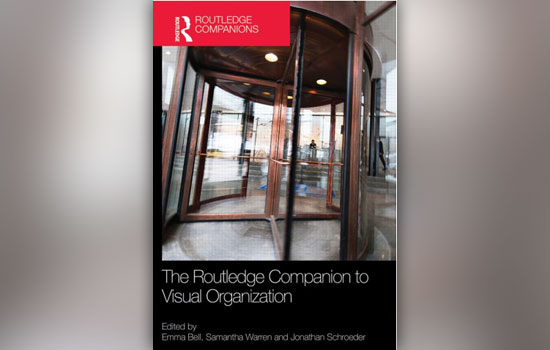Branding expert explores ‘visual organizations’
Author says visualizing corporate identities and practices is key to understanding contemporary organizations
Jonathan Schroeder is co-editor of The Routledge Companion to Visual Organization, a comprehensive guide to understanding how organizations and their members visualize their own identities and practices—and determine how they are perceived outside of the organization.
Experts say the Internet has put a premium on visualizing almost every aspect of organizational communication, identity, operations and strategy. So what does this mean for understanding organizations and the people who work for them?
The Routledge Companion to Visual Organization, co-edited by Jonathan Schroeder, the William A. Kern Professor of Communications at Rochester Institute of Technology, is a comprehensive, 24-chapter guide showcasing an international group of leading researchers who provide insight into the many ways organizations and their members visualize their own identities and practices—and determine how they are perceived outside of the organization. Co-editing the book is Emma Bell, professor of management and organization studies at Keele University, and Samantha Warren, professor in management at the University of Essex.
“In compiling this book, our aim was to draw together the latest research and current thinking on the role of the visual in understanding organizations from a range of perspectives,” said Schroeder. “Visual organization studies includes researchers in the traditional management sub-disciplines of marketing and consumer behavior, accounting, organizational studies, operations management and tourism, as well as those working in areas of social policy, sociology of work, media and cultural studies. It is a highly interdisciplinary or perhaps even post-disciplinary field of scholarship and practice.”
According to Schroeder, who is an expert in the fields of branding and visual culture, the book is a collection of expertise from leading academics around the world and is a cutting-edge source of information for students, academics and researchers interested in disciplines such as film studies, entrepreneurship, marketing, sociology and organizational behavior.
“The visual constitutes an increasingly significant element of contemporary organization, as post-industrial societies move toward economies founded on creative and knowledge-intensive industries, all dependent upon visual technologies of the Internet, social media, and smartphones” added Schroeder. “The visual is reconfiguring the basic notions of management practices and introducing new challenges in organizational communication.”














